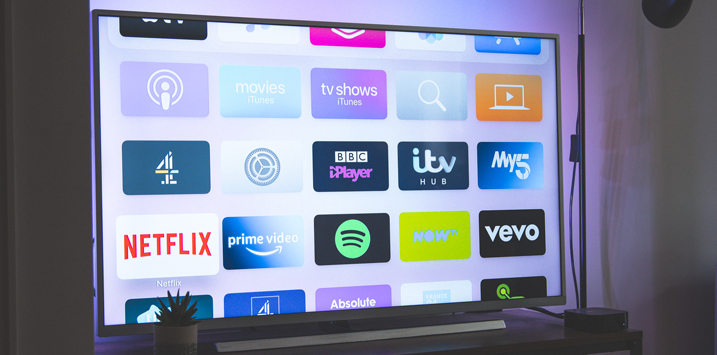
Streaming TV ain’t what it used to be
In 1999, I was working at an investment bank. It was a terrible year to be advising investors to invest in high-quality companies making a profit and to take profit on the technology-related initial public offerings (IPO) listed at massive first-day premiums despite being unprofitable businesses. It was the year of the first technology boom, now known as the Dotcom boom and subsequent bubble.
Back then, irrational investor exuberance was directed to those businesses leveraging, or hoping to leverage, the development of the Internet. For the first time, consumers could buy everything on websites. The Yellow Pages was dead. Anything and everything would eventually be found on the internet. Merrill Lynch authored a research book in which an analyst wrote investors could pay almost any price for technology leaders, such was the size of the opportunity pool and total addressable market.
At the peak of that first boom, in March 2000, Cisco Systems, a leading architect of the internet infrastructure, claimed the title of the world’s most valuable company, boasting a market valuation exceeding half a trillion U.S. dollars. And then expectations, as they always do, gave way to reality. The bubble burst. By the end of 2000, Cisco’s market value was cut by two-thirds and the Nasdaq was cut in half.
If you are young, you can be sure of one thing: It will happen again. And again. And again.
It happened again
Fast forward to 2021, and echoing the year 2000, a record 550 companies in the U.S. either IPO’d, merged with a special purpose acquisition company (SPAC), or did a direct listing. In an eerily similar trend to 2000, many of these companies were earlier-stage, pre-revenue, or unprofitable high-growth companies, some with no immediate plans to even be cash flow break-even.
Some of them had a simple gameplan: throw billions of investors’ dollars at a digital ‘platform’ that would disrupt, if not upend, an incumbent operator or industry by charging very little or nothing at all, taking all the customers, sending the incumbents broke and then jacking up prices again to leverage their new-found monopoly status.
Streaming TV
U.S. streaming services are an example of just such an attempt, to undermine Cable TV’s dominance. But a shock-and-awe, winner-take-all attempt at first prize has had to morph into a silver or even bronze medal as investors grew more impatient and subscriber growth rates began to slow. What was meant to have been a clear-cut win for the new kids on the block has become clouded by cuts to content and the need to jack up prices.
Having said that, Cable TV’s conventional dominance is waning, with its viewership now capturing less than half the total viewing time in the U.S…
Streaming services’ initial strategy, including nominal subscription charges, ensured struggling profitability. Their initial winner-take-all attack has failed, and in a world of five per cent interest rates on cash, shareholders are now demanding a return for their patience. Consequently, streaming services such as Netflix are recalibrating their financial models, hiking prices, and introducing ad-supported options.
Nielsen’s recent findings paint a still-disturbing composition for traditional TV, which encompasses broadcast and cable. It now represents less than 50 per cent of total U.S. viewing hours. Concurrently, the number of pay-TV subscribers is plummeting, hitting less than 50 million in the second quarter. In a telling indicator, leading multichannel providers, including Comcast, Charter, and Altice USA, experienced a record year-on-year loss of nearly 3.8 million subscriptions.
Streaming has seen an undeniable surge in user numbers thanks to cheap but sub-economic pricing. The fervor of the streaming wars since 2020 led media juggernauts into heavy investments for content, but their relentless chase for subscriber growth often kept prices unrealistically low. Consequently, streaming’s financial trajectory hasn’t been rosy. By the end of 2022, only Netflix and Hulu boasted profits. Disney+, Peacock, and HBO’s Max platform, on the other hand, incurred losses.
The term “content bubble” was coined as early as 2018 to describe this unsustainable trajectory.
For the reasons just explained, 2023 is witnessing price hikes from most major streaming platforms. The average increase is reported to be nearly 25 per cent for ad-free packages. Yet, it’s important to understand the nuances: while the combined monthly cost of leading U.S. streaming services is projected by The Financial Times to rise above U.S.$87, surpassing the U.S.$83 average cable package, this doesn’t account for bundle deals, which can significantly cut prices. Moreover, the emergence of ad-supported options, which can halve viewers’ monthly bills, has shown promising uptake – Disney+, for instance, reported 40 per cent of its new users opting for this since its introduction.
Fragmentation
The momentum isn’t just with premium streaming services. Completely ad-supported platforms like Amazon’s Freevee, Paramount’s Pluto TV, and Fox’s Tubi are witnessing substantial growth. One-third of U.S. viewers now gravitate towards these free streaming options. Interestingly, some of the most consumed content on these platforms is not fresh content but nostalgia-rich shows like “Suits,” which first aired over a decade ago.
The bubble has burst
Investors with dreams of global domination have woken up to a very fragmented and cloudy reality. As the streaming landscape adapts to co-habiting with incumbent cable TV offerings, investors will also have to ditch their hopes for a return to the heady share prices of yesteryear. The shift away from traditional TV is evident, but streamers will not be monopolies once hoped-for. From premium, ad-free models to completely ad-supported platforms, there’s a mosaic of options for viewers, and that means a much more difficult competitive landscape for investors to navigate and predict.